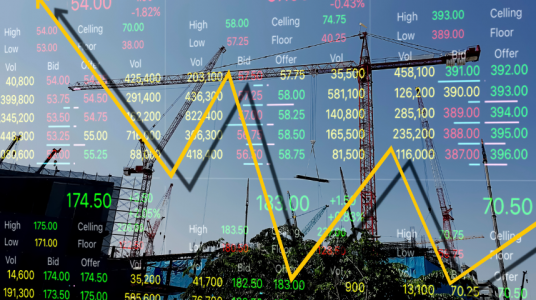
Economic Indicators for Event-Driven Trading
19 Feb 2024
Engaging in economic indicator-based trading is an investment approach that allows traders to capitalize on past events, trends, and predictions for future financial market developments. Numerous external factors, such as interest rates, inflation, and unemployment, can significantly influence global markets.
This article explores crucial economic indicators in the UK, many originating from the US and applicable to countries worldwide, providing insights into how these indicators can be leveraged for effective event-driven investing strategies.
Economic Indicators Definition:
Economic indicators fall into two categories: 'leading' and 'lagging.' Lagging indicators confirm long-term trends that have occurred in financial markets, while leading indicators anticipate future outcomes. Combining both types provides a comprehensive trading strategy, offering insights into past results and informing new predictions.
Key Macroeconomic Factors:
- Employment
- Inflation
- Consumer Activity
-
Interest Rates
These factors impact event-driven trading strategies, and reports in the UK are typically published by the Office for National Statistics (ONS), serving as a primary institution for statistics. In the US, institutions like the Federal Reserve and the Federal Open Market Committee (FOMC) manage the economy.
Leading Economic Indicators:
- ADP National Employment Report: Measures monthly changes in US employment, excluding farming and government sectors.
- Business Inventories: Reflects turning points in the economy based on the value of unsold goods held by manufacturers, wholesalers, and retailers.
- Consumer Credit: Correlates with a country's consumer confidence and spending, indicating lenders' comfort with issuing loans.
- Consumer Price Index (CPI): Primary measure of inflation, released monthly by the ONS, tracking changes in the cost of living.
- Current Account: Reflects the flow of capital in and out of a country, influencing currency strength. Released quarterly.
- Gross Domestic Product (GDP): Broadest indicator of economic activity and growth, released quarterly.
- Import Prices: Influences inflation for consumers and businesses relying on imported goods. Released monthly.
- Non-Farm Payrolls: Measures jobs added or lost in the US monthly, excluding agricultural jobs.
- Producer Price Index (PPI): Offers an early indication of inflation as it analyzes changes before goods reach retail. Released monthly.
- Retail Sales: Crucial measure of consumer demand and spending, indicating overall economic activity. Released monthly.
-
Unemployment Claims: Weekly report influencing consumer spending and overall economic health.
Event-Driven Trading Strategies:
These economic indicators play a vital role in event-driven investing, especially in global macro strategies. Traders leverage significant macroeconomic events to identify opportunities in financial markets. For instance, changes in currency exchange rates and interest rates can impact the forex market, and traders analyze these factors for short-term gains using derivative products like forward contracts.
Event-Driven Funds:
Event-driven trading extends to stock markets through private equities or hedge funds. Corporate events, such as mergers, acquisitions, and bankruptcies, can lead to share price inefficiencies, prompting hedge fund managers to open both long and short positions. Institutional investors, with their analytical expertise, commonly employ event-driven trading strategies to navigate high volumes of corporate events.


 Factors on Investment Decisions.png)
